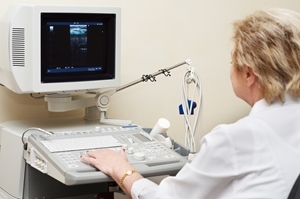There are a number of different types of diagnostic imaging you may use while working travel physical therapy jobs. Depending on the symptoms a patient is experiencing, he or she may need:
- CT scans
- MRI scans
- Ultrasound
- X-rays
However, if the patient you are working with is suffering from severe pain, you may not be responsible for conducting these tests yourself. In general, PTs have hands-on interaction with ultrasound machines most frequently. This can be a great tool for helping patients through the rehabilitation process. For instance, you may turn to ultrasound when helping someone who is dealing with hip pain or find that the patient requires the use of a CT scan if the source of his or her pain is unknown. There have been multiple investigations conducted to look at the use and effectiveness of diagnostic imaging in PT:
Physical therapy before imaging
Those who suffer from musculoskeletal disorders may be required to undergo therapy sessions prior to receiving any diagnostic imaging. According to researchers from the University of Puget Sound and Rueckert-Hartman College for Health Professions, PT professionals are beginning to play a greater role in this process. Based on the information that was published in the Journal of Orthopaedic & Sports Physical Therapy, it would be best for musculoskeletal disorder patients if physical therapists were their primary caregivers. Not only would this allow the medical professionals to have a historical reference for their work, it would also allow PTs to work together in the referral process during treatment.
When to use diagnostic imaging
Since there are a number of reasons you may use diagnostic imaging on travel therapy jobs, it's important to know when it is necessary. Generally, when a patient is experiencing pain, you may want to turn to ultrasound to help alleviate it. This is possible, as the machine sends sound waves through the body that help to generate heat. When applied to the joint, it can help reduce swelling and inflammation, making it easier to move forward with stretches and strengthening exercises. In addition to pain, you may want to use diagnostic imaging if you are seeing any abnormalities in patient recovery and progress. If you feel as though such treatment methods are necessary but don't have access to the needed equipment on an a travel therapy assignment, talk to your supervisor or colleagues about to whom you can refer the patient.

